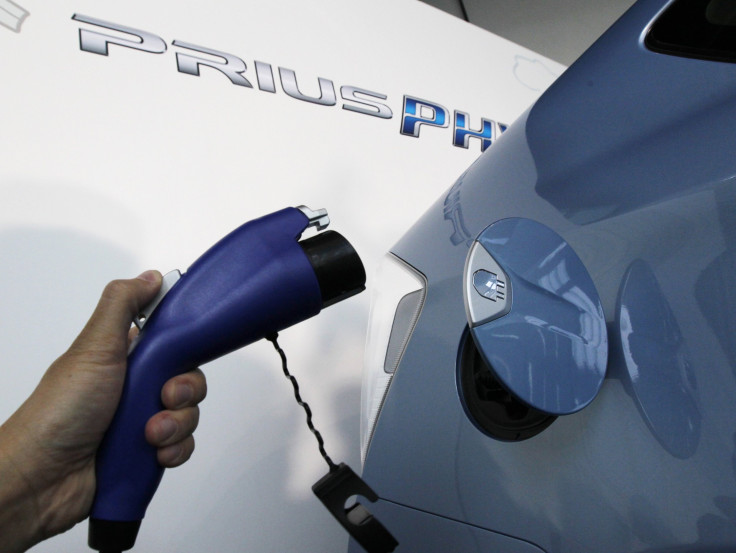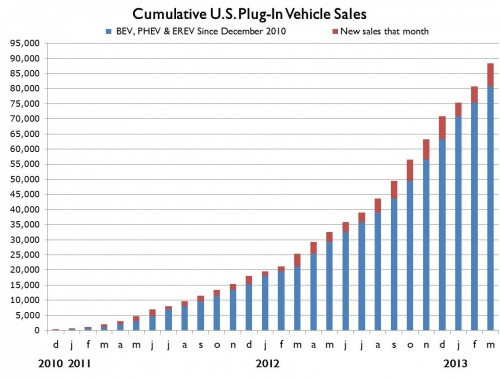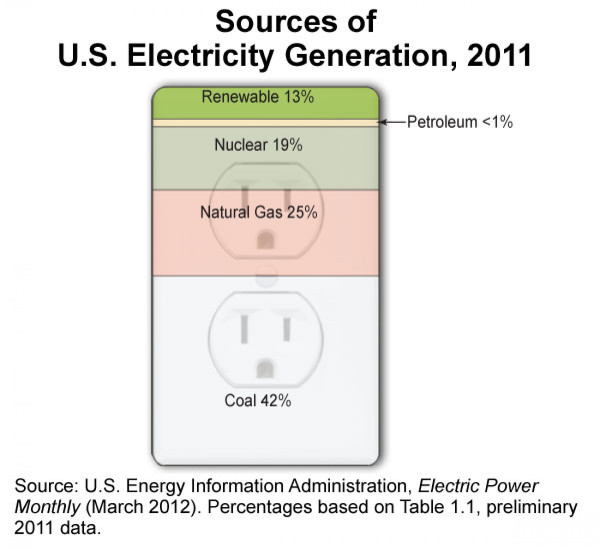Are Hybrid Vehicles, Like The Prius, Leaf, Volt And C-Max, Really Environmentally Safe? How Much Fossil Fuels Do They Use?

Virtually every automaker is touting its green credentials these days by offering new versions of old cars with “environmentally sound” engines, in other words, hybrid electric vehicles, or HEVs.
The Toyota Motor Corp.’s (NYSE:TM) Prius was the first to make a real dent in global auto sales, but since then the General Motors Co. (NYSE:GM), Honda Motor Co. Ltd. (NYSE:HMC), and the Ford Motor Co. (NYSE:F) all have had some success with these cars that are powered by an internal-combustion engine and a battery, switching between the two depending upon whether you are in the city or on an open highway, whether you are stopped or driving 60 mph.
And as these cars grow in popularity -- hybrid sales were up 32 percent in the first two months of this year compared with the same period last year -- it’s worth asking: Are they really green or are we kidding ourselves?
The typical hybrid gets good gas mileage -- the Prius claims a combined 50 mpg -- but that doesn’t tell the whole story. For one thing, the manufacturing of lightweight cars, such as most hybrids, requires more energy and leaves a larger carbon footprint than the production of a traditional automobile because the forging process for aluminum is more complex than, say, stainless steel.
For another, the extra battery packs carried by hybrids require energy-intensive mining of nickel, copper and rare-earth metals, potentially polluting the areas where these resources are located. Shipping these raw materials first to refineries and then to battery-production plants also makes the process an energy hog.

The latest hybrid iteration is the plug-in hybrid electric vehicle, or PHEV -- such as the Prius Plug-In, the Ford C-Max Energi, the Honda Accord Plug-In and the Chevy Volt -- which has either larger or more batteries than other HEVs that take over the lead role in vehicle propulsion, while the internal-combustion engine serves as a backup.
PHEV batteries need to be recharged, sometimes for hours, by plugging into the power grid. And that’s where the trouble begins. The lion's share of electricity in the U.S. is generated by coal, with only 13 percent coming from renewable resources, according to the U.S. Energy Information Administration. Consequently, an awful lot of fossil fuel is tapped to recharge supposedly nonpolluting cars every day.
“It’s safe to say that over half of our electrical energy comes from the combustion of fossil fuels,” said Patrick Michaels, director of the Center for the Study of Science at the Cato Institute. “So these hybrid vehicles are definitely not as green as meets the eye.”

Actually, just how environmentally sound HEVs are depends on where you plug into the grid. If you live in a clean-power state such as California and New York, charging a hybrid uses as much energy as if you were driving a gasoline-powered vehicle that gets 70 mpg, according to a report by the Union of Concerned Scientists. But if you live in a Rocky Mountain state where coal is used to generate much of the electricity, a plug-in hybrid is only as green as car that gets 33 mpg. At the U.S. Energy Department's Alternative Fuels Data Center, you can compare energy emissions of hybrids versus conventional vehicles by ZIP code.
One way to minimize the amount of carbon emissions used by an HEV would be to recharge the cars during off-peak, low-electrical-demand periods, such as late at night, a recent study by the National Renewable Energy Laboratory pointed out.
The NREL paper recommended that communities set up electric-vehicle charging stations that can be programmed to restrict high-peak recharges. In addition, the agency suggested that smart cars in the future be capable of communicating with the electrical grid while plugged in, enabling them to only charge when electricity demand and prices are lowest, and that the potential for using solar panels on rooftops to recharge automobiles be examined closely.
Hybrids and the many offshoots we are likely to see in coming years are certainly a step toward vehicles that are cleaner and have a more limited carbon footprint than are most cars made today. But before making a purchase, you would do well to consider the true cost to the environment of the vehicle -- what some experts call the well-to-wheel price -- because that hidden figure may not be exactly what you want to hear.
© Copyright IBTimes 2024. All rights reserved.





















